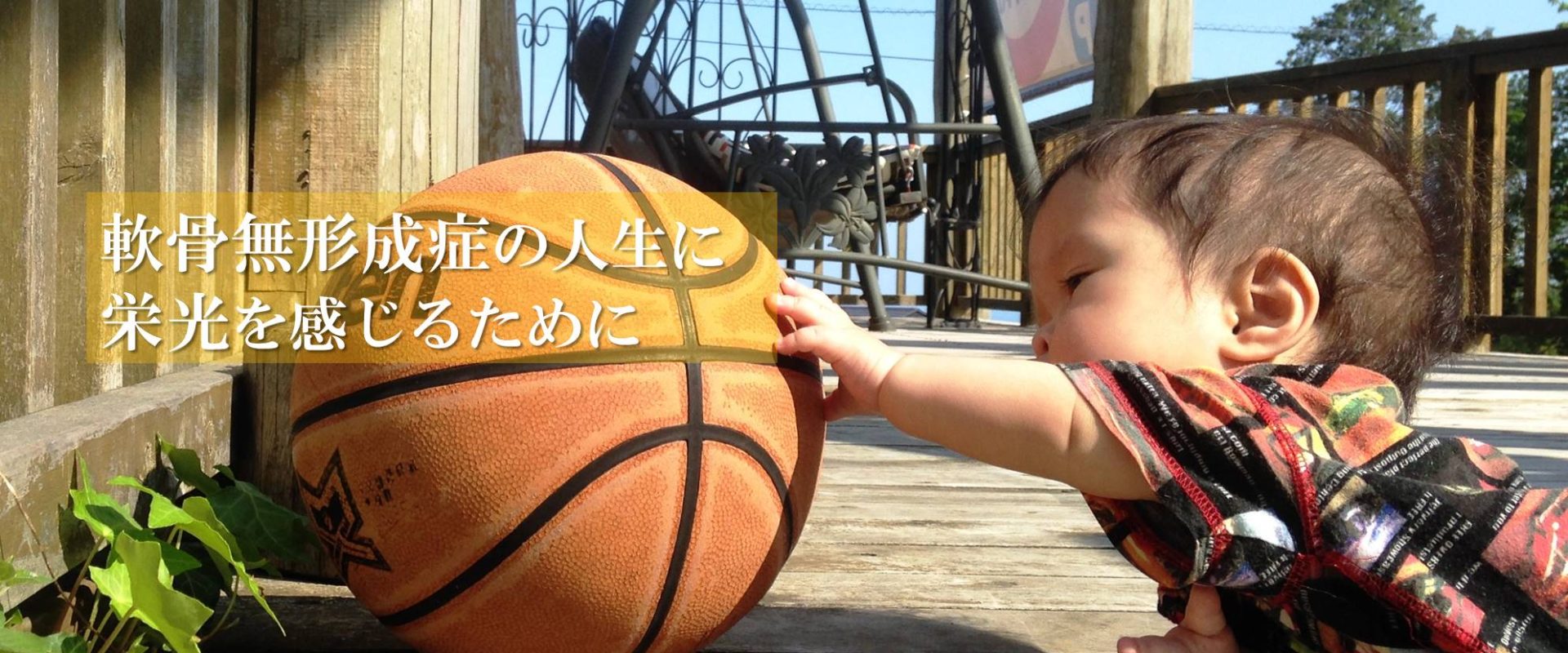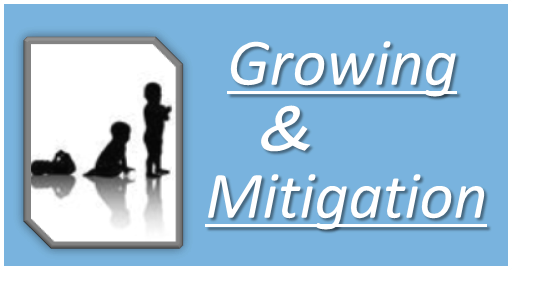軟骨無形成症に伴う深刻な合併症の一つに内膝(O脚)があげられます。これは脛が外側に 弓なりに曲がる特徴を呈する体の変形O脚をいいます。左右の内くるぶし(足関節内果部)をそろえても、左右の膝の内側が接しないものです。軟骨無形成症患者においては、小児期より発現し、骨延長術の適齢期(小学校高学年~中学校)に外科的な矯正によって同時に脚の湾曲を矯正するのが一般的とされます。
One of the serious complications of achondroplasia is the bow legs. This is a deformation of the body that exhibits the characteristic that the shin bows outward. Even if the left and right ankles are aligned, the inner sides of the right and left knees are not in contact. In patients with achondroplasia, if appears in childhood, it seems to correct the curvature of the legs simultaneously by surgical correction during the appropriate age of limb lengthening (elementary school upper grade to junior high).
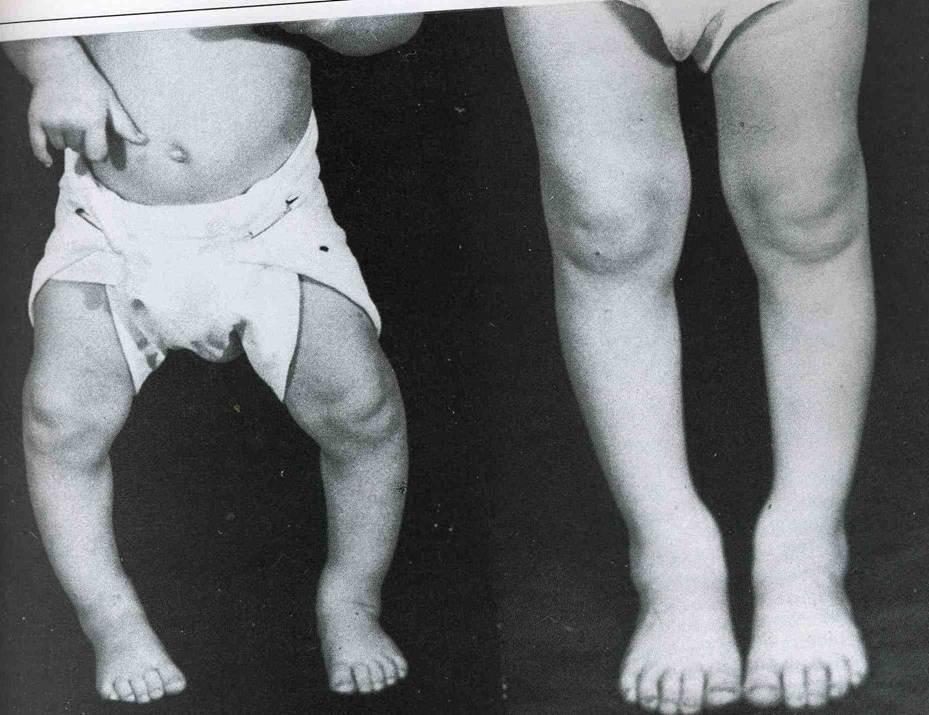
Source: Studyblue.com
□内反膝(O脚)の原因
一般的な健常児の場合、乳幼児期において膝はO脚を呈しており、歩行開始に伴う脚の筋力向上に伴い、徐々に外反していき2歳から6歳にかけては逆にX脚傾向となります。その後、外反は少し減少し、7歳ぐらいで成人の形に近くなります。このようなことから歩行開始以降に伴うO脚の原因の1つに太ももの筋肉の少なさが挙げられているため、その対策には、筋力強化を目的としたフィジカルセラピーが有効との基礎的な考え方があります。
□軟骨無形成症の子どもへの対応例
一方で、健常児と比較して筋力強化が難しい軟骨無形成症の子どもにおいては、O脚の兆候が見られた場合には、特別な対応も検討しなければなりません。ここでは小児初期に見られるO脚対応の一例として、整形外科医や理学療法士の見解を踏まえ、手術や過度な運動療法に頼らない「内転筋」のフィジカルセラピーおよび足底板(インソール)などの矯正器具を使う方法を取り上げます。
-Cause of bow legs
Even in case of normal healthy children, the knees have bow legs during the infancy, and with the improvement of the leg strength with the start of walking, they gradually eversion and tend to have an X leg tendency from 2 to 6 years old. After that, the eversion has decreased a little, and it approaches the form of an adult at around 7 years old. Due to the growing mechanism, one of the causes of bow legs regarding the start of walking is the lack of thigh muscles, so the basics of physical therapy with the aim of strengthening muscle strength is effective.
-Correspondence example to child with achondroplasia
On the other hand, as it is difficult for children with achondroplasia to strengthen their muscles compared to normal children, alternative measures should be considered if signs of bow legs are observed. Here, as an example of bow legs correspondence seen in early childhood, physical therapy and foot plate of “adductor muscle” that does not rely on surgery and excessive exercise therapy, based on the views of orthopedic surgeon and physical therapist covering how to use the correction device.
1. 内転筋に関わるフィジカルセラピー
幼児期の軟骨無形成患者の特に脚を閉じる役割である「内転筋」が衰えていることが、O脚の原因の一つと考えられているため、その対策には内転筋の強化が有効ではないかと考えられます。
自宅でできる内転筋の筋力強化のエクササイズとして、以下のものがあげられます。
✓両脚でボールやクッションなどを挟み、ゆっくりと脚を閉じていき限界のところで数秒キープする
✓ゆっくりと脚を開き、これらを繰り返す
✓上記を1セットとし、毎日行いセット数を増やしていく
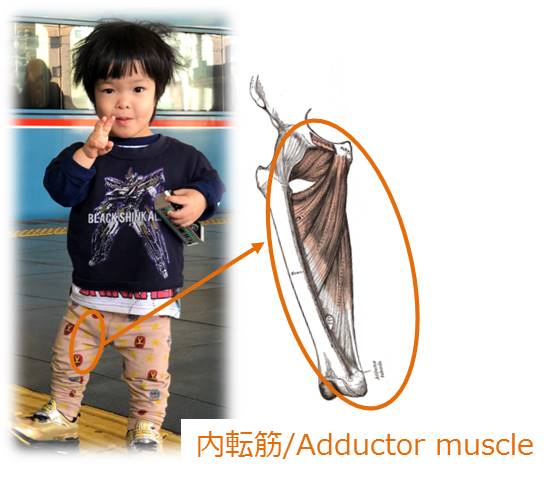

2. 足底板(インソール)の使用
O脚は、骨盤や足腰の歪みが原因の1つとして考えられています。 これらの歪みを直すには正しく歩く姿勢を保つことが重要です。その対策の一つに普段履いている靴にO脚対策用の足底板を入れることが有効ではないかと考えられます。
※足底板とは、靴の中に入れて使う治療用の中敷き。
-メリット
外側の底を高くした足底板を入れた靴を履くことで、外反(X脚方向)への動きを高める働きがあります。軟骨無形成症の子どもの膝は左右に動きやすいため、この外反への動きを高め固定化することで、膝の歪みが軽減されます。また、母趾球(ぼしきゅう)に力が入ることで地面を蹴りやすく前へ向かう推進力が向上します。
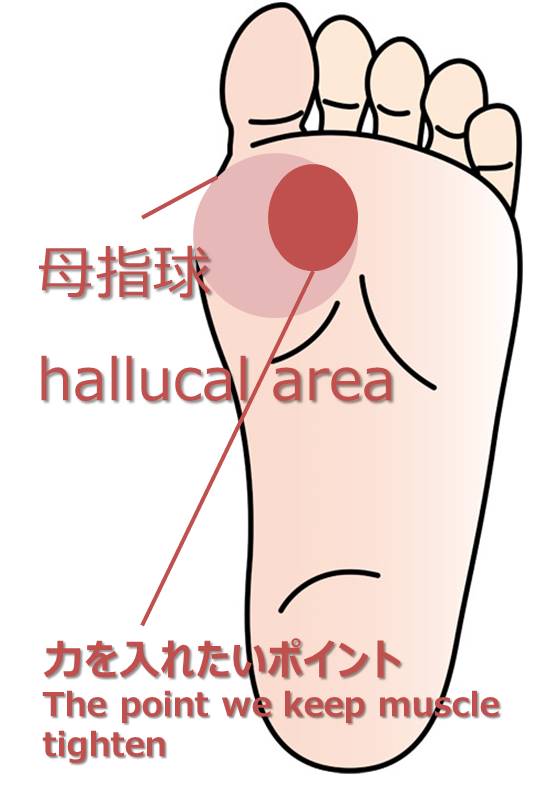
※母趾球は、足の裏の親指の付け根にあるふくらみ。歩行時や走る時、ジャンプの時などに体重が乗り、地面を蹴る部分であり尚且つ衝撃を吸収する働きがある。
-デメリット
シンプルで一定の効果が期待できる療法である一方、インソールを外した時は外反(X脚方向)に働く力がリリースされるため、日常生活において室内で過ごす時間が長いようであれば足底版は下靴用だけでなく上履きおいても利用しギャップを抑える必要が発生します。したがって、整形外科医や装具士(国家資格)の所見を踏まえながら低い角度からスタートする必要があります。
また、どんなに効果のある足底板を購入したとしても、靴の形にフィットさせる必要があるため、異なるサイズや形の靴にはジャストフィットするとは限らないというデメリットがあり、故に脚の成長とともにサイズ変更が不可欠となります。
1. Physical therapy related to adductor muscle
Since it is considered that one of the causes of bow legs is that the “adductor muscle”, which is the role of closing the legs, is particularly weak in young children with achondroplasia, it is considered that strengthening the adductor muscles regarded as effective. The following exercises are available for strengthening the adductor muscles at home.
- Hold a ball or cushion with both legs and close the legs slowly and keep for a few seconds at the limit
- Slowly open your legs and repeat these
- Set the above as one set and do it daily to increase the number of sets
2. Use of foot plate
Bow legs are considered to be one of the causes of distortion of the pelvis and legs. To correct these distortions, it is important to maintain a proper walking posture. It is thought that it is effective to put the foot plate for bow legs measures into the shoes usually worn as one of the measures.
※ The foot plate is a therapeutic insole for use in shoes.
-Advantages
By putting on shoes with a raised sole on the outside bottom, it works to enhance the movement to the valgus (X leg direction). Since knees of children with achondroplasia are easily moving from side to side, by increasing the movement to this valgus and immobilizing, distortion of the knee is reduced. Also, by putting pressure on the ball, it is easy to kick the ground, and the forward power is improved.
※ The ball is a bulge at the base of the thumb of the sole of the foot. When walking, running, jumping, etc., the weight is on the ground, and it is a part that kicks the ground and has a function to absorb shock.
-Disadvantages
While it is a therapy that can be expected to have a simple and constant effect, the force acting on the valgus (in the direction of the X leg) is released when removing the insole. There is a need to use gaps not only for lower shoes but also for upper shoes. Therefore, it is necessary to start from a low angle based on the opinion of orthopedic surgeons and orthologists (national qualifications).
Also, no matter how effective the foot plate is purchased, it has the disadvantage that it does not have to fit exactly to shoes of different sizes and shapes, as it has to fit into the shape of the shoe, thus the size along with the growth of the legs changes are essential.
疾患由来のO脚の治療は、足底板を使用するなどの保存療法と外科的な手術療法に大別されますが、装具を用いた保存療法の効果については意見が分かれるところです。変形が高度になった場合は一般的に下肢の形態異常を矯正するための手術が必要となります。
我が子の場合、足底板をつけて早3か月が経過し、以前よりも速いスピードで安定した走りがみられるようになった実感はあります。一方で、将来的な卒業といったエンドポイントについては、有益な示唆を得ることができず懸案が残ります。
本件は小児初期の子どもを対象とした保存療法の一事例としてご参考ください。
Treatment of the disease-derived bow legs is broadly divided into conservative treatment such as using a sole plate and surgical treatment, but there is a disagreement as to the effect of conservative treatment using a brace. If the deformity is advanced, surgical treatment is required, and surgery is generally required to correct the lower extremity deformity. In the case of my child, it has been felt that three months have passed since he put on the foot plate, and stable running can be seen at a speed faster than before. On the other hand, with regard to endpoints he will get not to use it for the future, there is a problem because no useful suggestions can be obtained.
Please refer to this case as an example of conservative treatment for children in early childhood.

